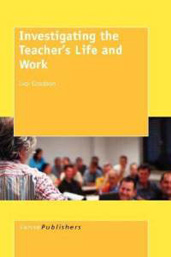Investigating the Teacher's Life and Work
A Guide to Life History Interviews
3) Setting the scene
A subsequent stage is what might be called ‘setting the scene’. Often little thought is given to the scene in which the life history interview will be conducted, but it is of enormous importance. For example, in a recent life history workshop, two women who did not know each other decided to sit facing a picture, rather than facing each other, as a way of easing their way into the interview. The advantage of sitting side-by-side is that you can slowly turn to each other when you are ready to make eye contact, rather than insist upon it from the beginning. If you insist upon it from the beginning, it forces the situation, which to these two women would have felt very unnatural. Lawrence Stenhouse, an early English ethnographer, once argued that the best way to conduct interviews was driving in a car. This way, the interviewer again is looking out of the window ahead and only occasionally turns to make eye contact with the interviewee – likewise, the interviewee is freed from the immediate, interrogative eye of the interviewer. But the setting of the scene for the interviewer is a highly personal decision that has great impact on the subsequent interview. It relates to the next stage of the process.
4) Building trust with each other
Building trust with the interviewee is an incredibly complicated process and has to be established fairly quickly if the interview is to be successfully conducted. That is the problem: you have got to quickly come to a bonding with each other; quickly come to some kind of agreement; quickly develop some sense of intimacy and trust, before there is going to be any proper exchange of views. It is not going to happen if you do not build up intimacy and trust. There is no programmatic way for establishing intimacy and trust: it is a question of human chemistry and, as such, there is no procedural formula.
What is clear, however, is that the more one explains the process and use of the life history interview, the better this is in building early trust. I always make a point of explaining what is going to happen to the interview when it is completed, and explaining what it is for. Often this transaction can be conducted around the signing of an ‘informed consent’ protocol. The explanation of this protocol can be part of the process of building up trust and intimacy.
